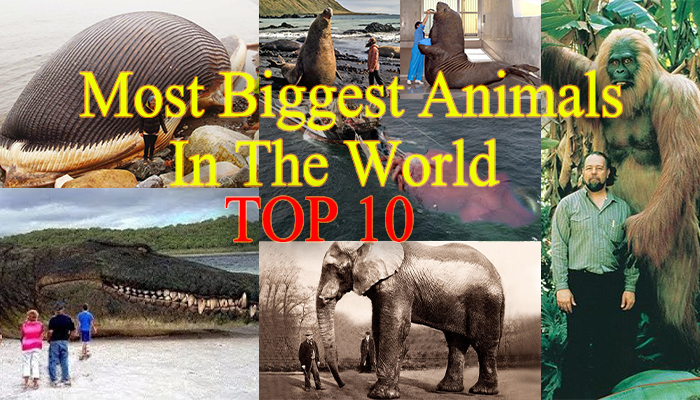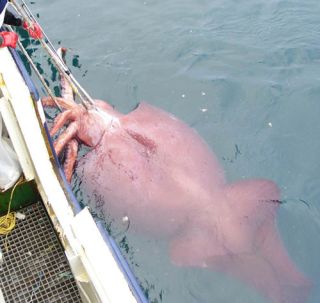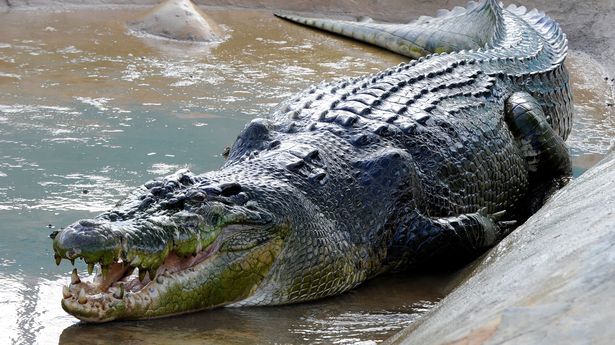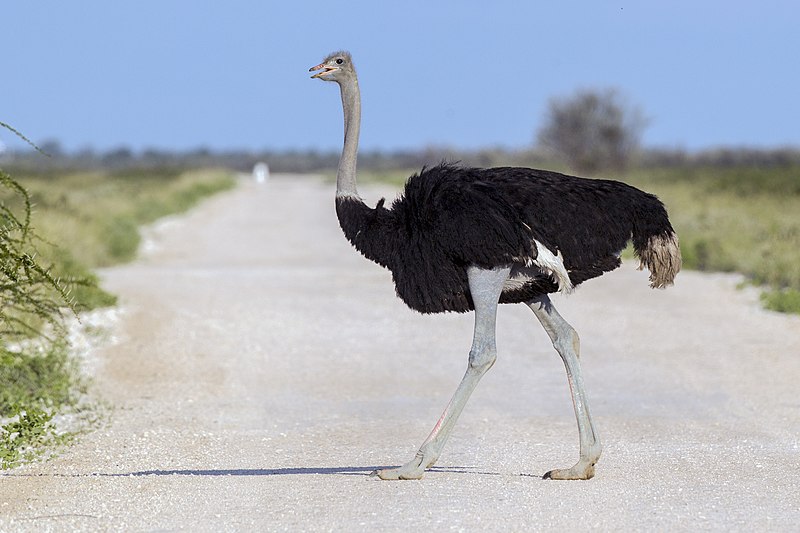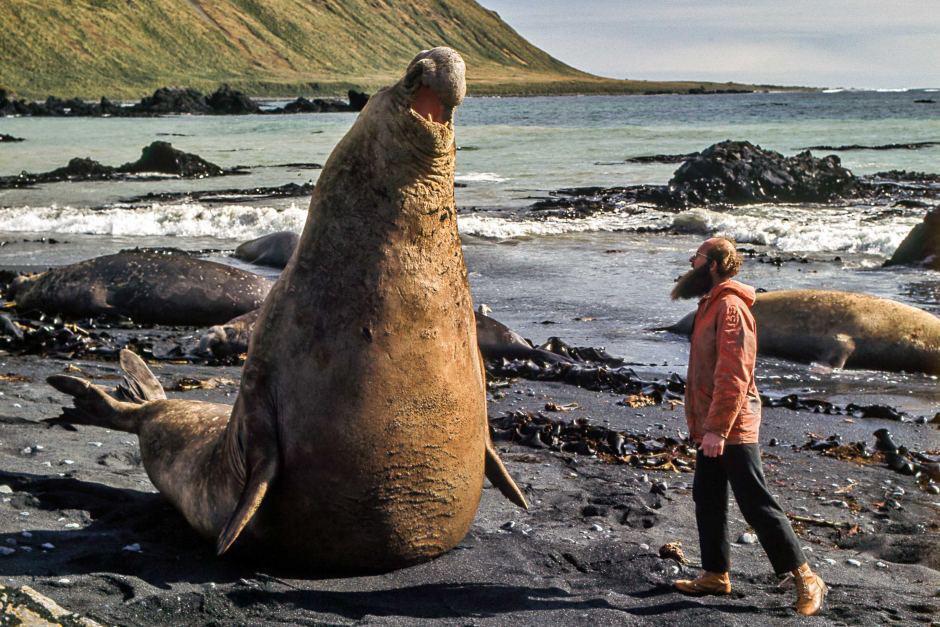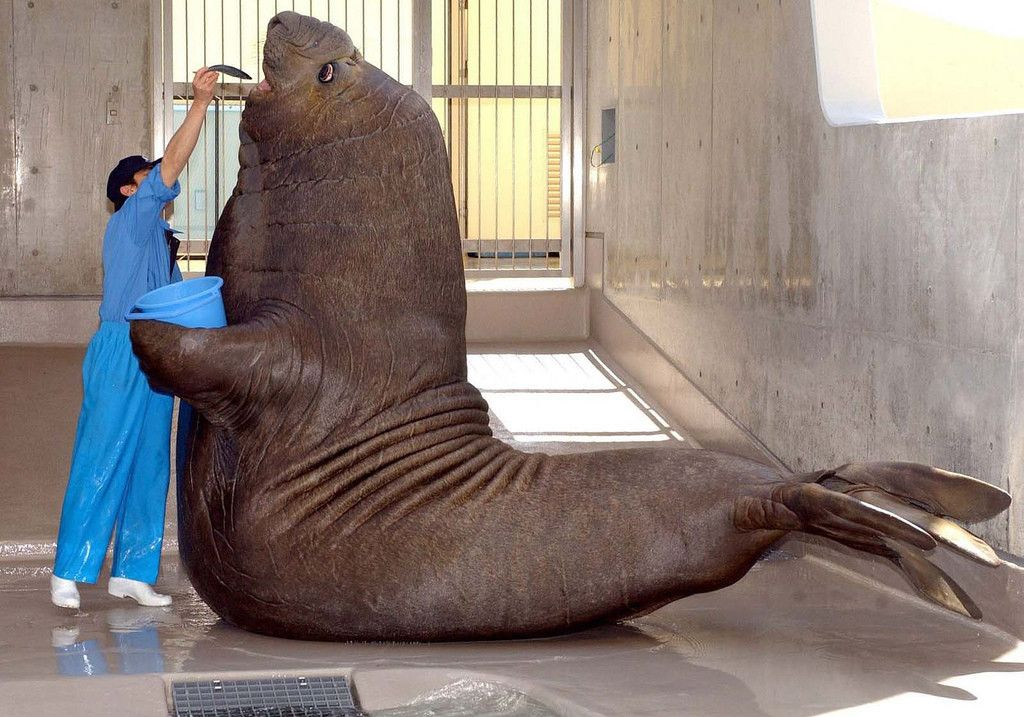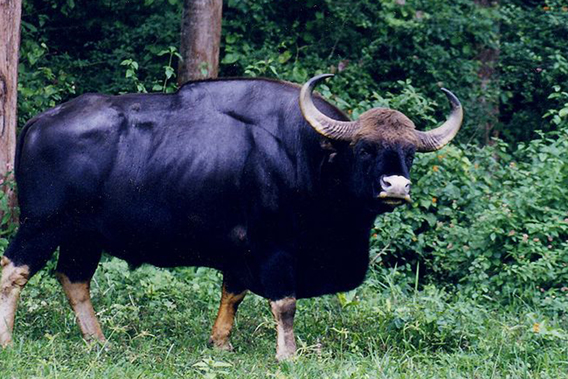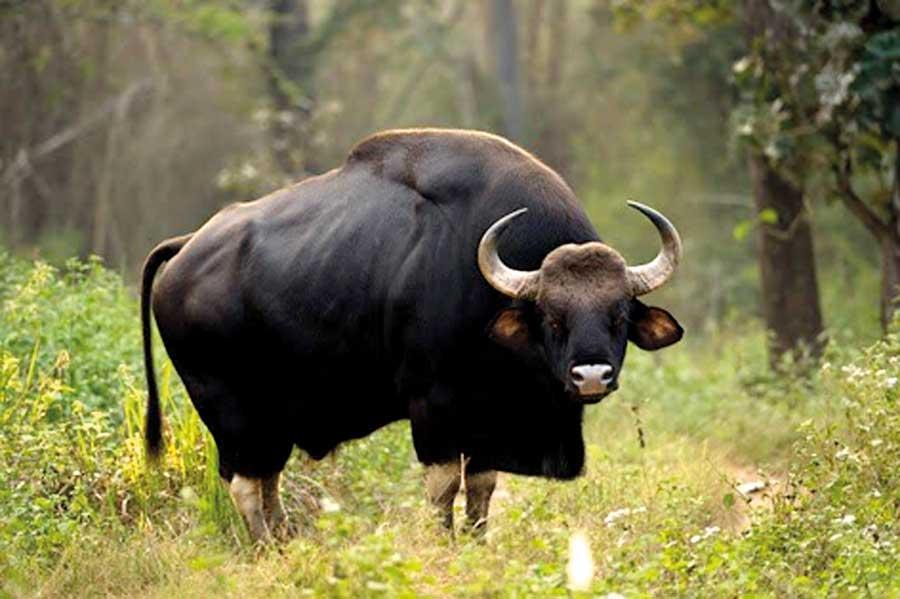You might be curious to learn which animal is regarded as truly the biggest given the wide variety of shapes, sizes, colors, and forms that they can take. What is the Most Biggest Animal In The World..?
1. Blue Whale (The Biggest Animal In The World)
Length: 23 – 24 m (Female, Southern hemisphere population, Sexually mature)
Mass: 130,000 – 150,000 kg (Adult)
Scientific name: Balaenoptera musculus
Family: Balaenopteridae
Infraorder: Cetacea
Kingdom: Animalia
According to the World Wildlife Foundation, the largest animal in the world is the Antarctic blue whale. It can weigh up to 400,000 pounds and stretch an astonishing 98 feet in length.
Marine mammals and baleen whales include the blue whale (Balaenoptera musculus). The largest animal is known to have ever lived, it could grow to a maximum confirmed length of 29.9 meters (98 ft) and weigh up to 199 tonnes (196 long tons; 219 short tons). The dorsal surface of the long, slender body of the blue whale can be a variety of hues of greyish-blue, with the underside being slightly lighter.
There are four identified subspecies of the blue whale: B. m. musculus in the North Atlantic and North Pacific, B. m. intermedia in the Southern Ocean, B. m. brevicauda (also known as the pygmy blue whale) in the Indian Ocean and South Pacific Ocean, and B. m. indicia in the Northern Indian Ocean. Additionally, there may be a fifth subspecies present in the seas of Chile.
Typically, blue whale groups move between their wintering grounds close to the tropics and their summer feeding grounds near the poles. Additionally, there is proof of year-round residences as well as partial or age- or gender-based movement. As filter feeders, krill make up almost the entire food of blue whales.
With the exception of mother-calf relationships, they are typically solitary or congregate in small groups and lack a clearly defined social structure. Blue whale vocalizations have a fundamental frequency that varies from 8 to 25 Hz, and the area, season, behavior, and time of day can all affect how vocalizations are produced. Orcas are their only natural predators. This is the Most Biggest Animal In The World.
2. Colossal Squid
Length: 12 – 14 m (Adult)
Conservation status: Least Concern Encyclopedia of Life
Scientific name: Mesonychoteuthis hamiltoni
Family: Cranchiidae
Kingdom: Animalia
Order: Oegopsida
Phylum: Mollusca
The Mesonychoteuthis hamiltoni, also known as the giant octopus, belongs to the Cranchiidae family. It is regarded as the biggest squid species in terms of mass and is referred to as the giant cranch squid or Antarctic squid. Since there are so few examples of it, it is the only known member of the genus Mesonychoteuthis.
The largest specimens of the species, which are only known from beaks discovered in the stomachs of sperm whales, may weigh as much as 600-700 kilograms (1,300-1,500 lb), making it the largest known invertebrate.
The species is verified to reach a mass of at least 495 kilograms (1,091 lb). Maximum overall length is thought to be between 12 and 14 meters. (35–40 ft). The colossal squid has the biggest eyes of any known living thing, measuring an estimated 30 to 40 centimeters in diameter. (12–16 in). This is one of the Most Biggest Animal In The World.
3. African Elephant
Height: 3.2 m- 3.6 m
Lifespan: African bush elephant: 60 – 70 years, African forest elephant: 60 – 70 years
Scientific name: Loxodonta
Gestation period: African bush elephant: 22 months
Phylum: Chordata
Family: Elephantidae
Kingdom: Animalia
The largest elephant on record was an adult male African savanna elephant. He weighed about 24,000 pounds (10,886 kilograms) and was 13 feet (3.96 meters) tall at the shoulder! Most elephants don’t get that large, but African elephants do grow larger than Asian elephants.
African bush elephants (L.africana) and the smaller African forest elephant are the two kinds of living elephants that make up the genus African elephants (Loxodonta). (L.cyclotis). Both are social herbivores with grey skin, but they vary in terms of their tusk size and color, as well as the size and shape of their ears and skulls.
On the IUCN Red List, both species are categorized as having a high risk of going extinct; as of 2021, the forest elephant is categorized as critically endangered, while the bush elephant is categorized as rare. They face threats from habitat loss and fragmentation as well as poaching for the illicit ivory trade in several range nations.
A member of the family Elephantidae, Loxodonta is one of only two surviving genera. The lozenge-shaped enamel on their molar teeth is what gives them their moniker. The Middle Pliocene is when the fossilized remnants of various Loxodonta species were discovered in Africa. This is one of the Most Biggest Animal In The World.
4. Giraffe (World Highest Animal)
Height: 5 – 6.1 m (Male, Adult), 4.3 – 5.2 m (Female, Adult)
Gestation period: Northern giraffe: 15 months
Scientific name: Giraffa
Daily sleep: 4.6 hours (In captivity)
Family: Giraffidae
Kingdom: Animalia
A large-hoofed animal from Africa, the giraffe is a member of the genus Giraffa. It is the biggest ruminant on Earth and the tallest living terrestrial mammal. The Giraffa camelopardalis, which has nine subspecies, was once believed to be the only species of giraffe. Recent studies on their mitochondrial and nuclear DNA, as well as morphological measurements, have led researchers to suggest subdividing them into up to eight extant species. The fossil record contains descriptions of seven additional dead Giraffa species.
George, a member of the Masai male giraffe species, is one of the tallest giraffes ever measured. On January 8, 1959, George traveled from Kenya to Chester Zoo in the United Kingdom at the age of just 18 months. George was 19 feet (5.8 meters) tall when he arrived. At age nine, he was a massive 20 feet (6.1 meters) tall. Because of his height, George had to duck below the giraffe home every time his horns got caught in the doors.
The giraffe’s exceptionally long neck and legs, horn-like ossicones, and spotted coat patterns are its most distinctive features. It belongs to the family Giraffidae, along with the okapi, the nearest living relative. Its sporadic distribution stretches from Somalia in the east to South Africa in the south and from Niger in the west. Typically, savannahs and wooded areas are home to giraffes. They eat the leaves, fruits, and blossoms of woody plants, mostly acacia species, which they browse from heights that are inaccessible to most other herbivores.
Giraffes are vulnerable to attack from lions, leopards, spotted hyenas, and African wild dogs. Giraffes are gregarious and may congregate in big groups. They can live in bachelor herds of unrelated adult males or herds of related females and their young. Through “necking,” or combat encounters in which the neck is a weapon, males create social hierarchies. Females, who are solely responsible for rearing the young, are given access to mating by dominant males. This is one of the Most Biggest Animal In The World.
5. White Rhinoceros
Conservation status: Near Threatened
Scientific name: Ceratotherium simum
Gestation period: 16 – 18 months
Mass: 2,300 kg (Male), 1,700 kg (Female)
Height: 1.7 – 1.9 m (Male, At Shoulder), 1.6 – 1.8 m (Female, At Shoulder)
Family: Rhinocerotidae
Kingdom: Animalia
The Ceratotherium simum, also known as a white rhinoceros, is the biggest rhinoceros species still living today. Of all rhino types, it is the most social and has a large mouth for grazing. The southern white rhinoceros, which had an estimated 15,942 wild animals in 2018 and the much more uncommon northern white rhinoceros, are the two subspecies of the white rhinoceros.
With only two confirmed individuals alive in 2018 (two females: Fatu, 18; and Najin, 29); both in captivity—the northern subspecies has a very small number of survivors. The final male Northern white rhinoceros in the world, Sudan, passed away on March 19, 2018, in Kenya, at the age of 45. This is one of the Most Biggest Animal In The World.
The biggest of the five rhinoceros species still in existence is the white rhinoceros. The white rhinoceros, the largest land animal and terrestrial mammal living today, is only surpassed in size by the three extant elephant species. Despite the fact that these two animals share a lot of mass, it weighs a little bit more on average than a hippopotamus. It has a huge head and torso, a short neck, and a wide chest.
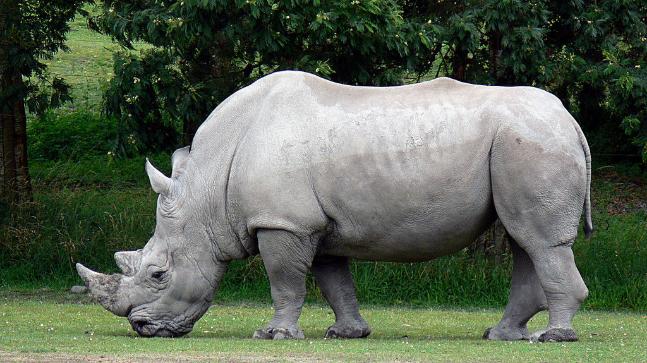
6. Hippopotamus
Speed: 30 km/h (Galloping)
Scientific name: Hippopotamus amphibius
Trophic level: Omnivorous
Mass: 1,500 – 1,800 kg (Male, Adult), 1,300 – 1,500 kg (Female, Adult)
Conservation status: Vulnerable (Population decreasing)
Gestation period: 243 days
Family: Hippopotamidae
The hippopotamus is the largest terrestrial mammal after elephants and rhinos. Additionally, it is the biggest living land artiodactyl. The nearest extant relatives of the hippopotamids are cetaceans (whales, dolphins, porpoises, etc.), from which they diverged about 55 million years ago, despite their physical resemblance to pigs and other terrestrial even-toed ungulates.
Hippos are recognizable by their pillar-like legs, nearly hairless bodies, wide-opening mouths with large canine tusks, and enormous size: adults weigh an average of 1,300 kg (2,900 lb) for cows and 1,500 kg (3,300 lb) for bulls (males) as adults. (females). It can sprint short distances at 30 km/h (19 mph) despite its stocky build and short legs. This is one of the Most Biggest Animal In The World.
7. Saltwater Crocodile (Largest Crocodile)
Mass: 200 – 1,100 kg (Male, Adult), 76 – 200 kg (Female, Adult)
Length: 3.5 – 6 m (Male, Adult), 2.7 – 3.4 m (Female, Adult)
Speed: 24 – 29 km/h (In The Water, In Short Bursts)
Conservation status: Least Concern
Scientific name: Crocodylus porosus
Family: Crocodylidae
Kingdom: Animalia
The saltwater crocodile, or Crocodylus porosus, is a species of reptile that is indigenous to saltwater habitats, brackish wetlands, and freshwater waterways from the east coast of India through Southeast Asia and the Sundaic region to northern Australia and Micronesia.
On the IUCN Red List, it has been categorized as Least Concern since 1996. It is threatened by illegal killing and habitat degradation, and it was hunted for its skin throughout much of its territory up until the 1970s. It is considered harmful to people.
The biggest known living reptile is thought to be the saltwater crocodile. Males can reach lengths of 6 m (20 ft) and weigh between 1,000 and 1,500 kg. They rarely reach lengths of 6.3 m (21 ft). (2,200–3,300 lb). Females rarely exceed 3 m and are much smaller. (10 ft).
In addition to these names, it is also known as the saltie, the estuary crocodile, the Indo-Pacific crocodile, the marine crocodile, and the sea crocodile. The majority of their target is ambushed by these large, opportunistic, hypercarnivorous apex predators before being drowned or swallowed whole.
Nearly any animal that approaches their territory can be defeated by them, including other predators like sharks, different freshwater and saltwater fish species, including pelagic species, invertebrates like crustaceans, different amphibians, reptiles, birds, and mammals, including humans. This is one of the Most Biggest Animal In The World. ( Largest crocodile In The World)
8. Ostrich
Speed: Common ostrich: 70 km/h
Height: Common ostrich: 2.1 – 2.8 m
Rank: Genus
Higher classification: Ostriches
Scientific name: Struthio
Family: Struthionidae
Infraclass: Palaeognathae
Ostriches are enormous animals without wings. The largest eggs laid by any living terrestrial animal are produced by these largest living birds. They can run at a speed of 70 km/h (43.5 mph), making them the fastest birds on earth. They are widely cultivated, with Namibia and the Philippines having sizable industries. Large ostrich feathers are used as plumes to decorate formal headgear, and ostrich leather is a valuable commodity.
Humans have used ostrich embryos for countless generations. The infra-class Palaeognathae, a diverse group of flightless birds also known as ratites and including the emus, rheas, cassowaries, and kiwis, contains ostriches as members of the genus Struthio in the order Struthioniformes. Ostriches come in two varieties: the common ostrich, which is found throughout much of sub-Saharan Africa, and the Somali ostrich, which is found only in the Horn of Africa.
The common ostrich was once indigenous to the Arabian Peninsula, and during the Late Pleistocene and probably into the Holocene, ostriches could be found in Asia as far east as Mongolia. This is one of the Most Biggest Animal In The World.
9. Southern Elephant Seal
Mass: 2,200 – 4,000 kg (Male), 400 – 900 kg (Female)
Scientific name: Mirounga leonina
Conservation status: Least Concern
Length: 3.7 m (Adult)
Trophic level: Carnivorous
Gestation period: 243 days
Family: Phocidae
One of two types of elephant seals is the southern elephant seal (Mirounga leonina). It is also the biggest extant marine animal that is not a cetacean. It is the largest member of the clade Pinnipedia and the order Carnivora. Its large size and the adult male’s large proboscis, which is used to create extremely loud roars, particularly during the breeding season, give rise to its name.
A bull southern elephant seal weighs about 40% more than a male northern elephant seal (Mirounga angustirostris), twice as much as a male walrus (Odobenus rosmarus), and six to seven times more than the polar bear (Ursus maritimus) and the Kodiak bear, the largest surviving mostly terrestrial carnivorans. (Ursus arctos middendorffi). This is one of the Most Biggest Animal In The World.
10. Gaur
Scientific name: Bos gaurus
Higher classification: Bos
Rank: Species
Family: Bovidae
Kingdom: Animalia
Order: Artiodactyla
Phylum: Chordata
Adult females’ body mass varies from 440 to 1,000 kg (970 to 2,200 lb) and adult males’ body mass from 588 to 1,500 kg (1,296 to 3,307 lb). In general, measurements are taken from surveys of gaurs conducted in India.
The gaur averages about 168 cm (5 ft 6 in) for females and 188 cm (6 ft 2 in) for males, with a cranium and body length of 250 to 330 cm (8 ft 2 into 10 ft 10 in) and a tail length of 70 to 105 cm (28 to 41 in). The Indian bison, also referred to as the gaur (Bos gaurus; /ar/), is a breed of bovine that is indigenous to South and Southeast Asia.
It has been classified as Vulnerable on the IUCN Red List since 1986. Maximum 21,000 mature people were thought to be living in the world in 2016, with India having the bulk of them. In the last three generations, its population has decreased by more than 70%, and it is now extinct in Bangladesh and probably Sri Lanka. In regions that are well-protected, the population is stable and growing.
In the past, the gaur lived in countries like Vietnam, Cambodia, Laos, Thailand, Peninsular Malaysia, Myanmar, India, Bangladesh, Bhutan, China, and Nepal that are now part of mainland South and Southeast Asia. The species’ current distribution is extremely fragmented, and Sri Lanka is where it has gone extinct. This is one of the Most Biggest Animal In The World.
I hope you like our article about the most biggest animals in the world. This article is based on publicly available information. Please comment on your idea and don’t hesitate to share or pin our article…
You Might Like-
Visit Our Online Shop Website- WWW.CEYLEBRITY.COM
Ceylebrity Sinhala News And Articles- WWW.CEYLEBRITYNEWS.LK
Knowledge World Blog- WWW.KNOWLEDGEWORLD.BLOG
Share
